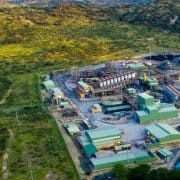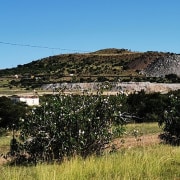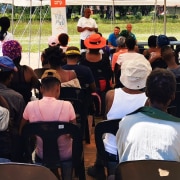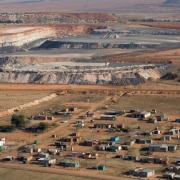|
Getting your Trinity Audio player ready...
|
Image: Solomon Star
The third edition of Transparency International Australia’s (TI-A) Mining Awards Corruption Risk Assessment (Macra) tool is now live, and released as part of the organisation’s Accountable Mining Programme.
Macra helps users to identify and assess the underlying causes of corruption in mining sector awards. These risks create opportunities for corruption and undermine the lawful, compliant and ethical awarding of mining sector licences, permits and contracts.
The Macra tool, according to the organisation, has been used by TI chapters working in 23 countries, including some of the world’s most resource-rich nations.
The new edition focuses particularly on the gender-sensitive approach to risk assessment, with guidance embedded throughout each step of the assessment process as well as in a dedicated annex.
Specifically, says TI-A, the updated Macra tool helps identify the gendered impacts of corruption on women, and the barriers that hinder women’s participation in decision-making and accountability efforts, particularly at a community level. By guiding users to collect information that will help identify, understand and address these barriers, the tool empowers users to identify and mitigate the specific gendered impacts of corruption on women.
“Strategies to tackle corruption will only be truly effective if they address the barriers to women’s voice and agency – barriers created by gender equality – and mitigate the gendered impacts of corruption,” says TI-A. “Women have an important role to play in preventing corruption.”
This is because corruption may be more likely to happen or go undetected if women are left out of the awards process, or their participation is restricted.
And when such corruption does occur, it can have a disproportionate impact on women in mining:
- Women’s voice in community decision-making. If traditional leaders can monopolise consultations or negotiations with companies for community development agreements, women and women’s interests are likely to be excluded from any compensation or benefit-sharing agreements.
- Safety of female artisanal miner licence applicants. Having to interact directly with government officials increases the chances that artisanal miner licence applicants will face demands for sexual favours in exchange for processing the application – particularly when they are women whose livelihood depends on artisanal mining.
- Livelihood and sources of income of women and men in the community. Many mining projects occur in places where formal title or rights to land are not documented or recorded in a registry. In communities where women are reliant on subsistence farming, corruption that deprives them of their land directly affects their livelihood and entrenches gender inequality.
- Domestic roles of women and men in the community. Environmental damage resulting from corrupt behaviour, such as water and air pollution, has a significant impact on domestic roles traditionally played by women such as caring for sick members of the family and sourcing fresh water or firewood for household chores.
The new edition, TI-A adds, also includes guidance on analysing strengths and weaknesses in a jurisdiction’s process for awarding mining permits. Strengths are aspects of the process or practice that help prevent or detect corruption. For example, formal procedures for cross-checking and scrutinising decisions to award a mining or exploration licence help prevent corruption. This is a strength that should be weighed against any weaknesses in the process to assess the possibility of an identified risk occurring.
The tool is aimed at both researchers and practitioners.
For more information, visit TI Australia.








